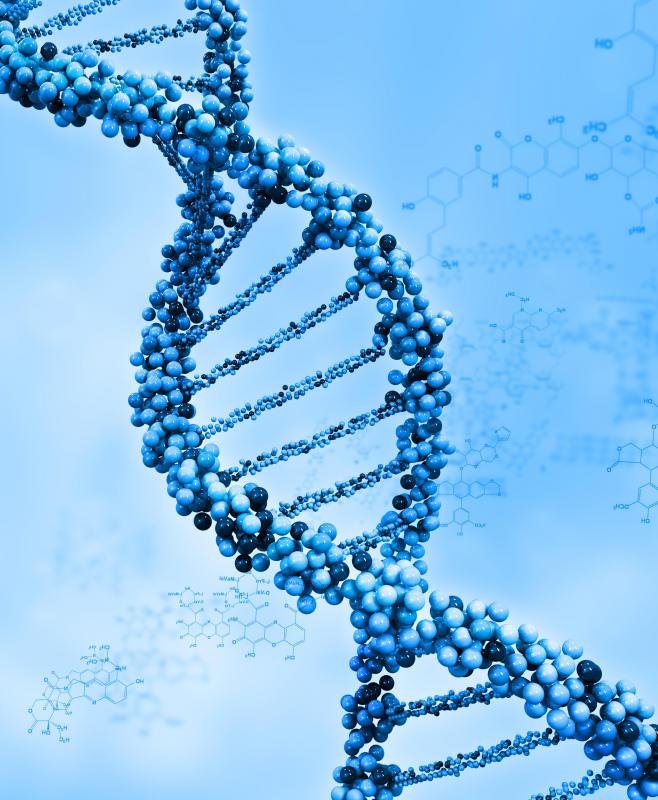At InfoBloom, we're committed to delivering accurate, trustworthy information. Our expert-authored content is rigorously fact-checked and sourced from credible authorities. Discover how we uphold the highest standards in providing you with reliable knowledge.
What Is Histone Acetylation?
Histone acetylation is the process of adding an acetyl group to the end of a histone protein. Histone proteins are large proteins, commonly referred to as "beads," which play an important role in condensing and relaxing deoxyribonucleic acid (DNA) so different genes are exposed for transcription and translation. Aceylation occurs on lysine residues on the N-terminus of the histone proteins, and removes positive charge from the proteins. The reduction of positive charge makes the proteins less attracted to the negatively charged DNA, thereby relaxing the DNA from its tight coils around the protein. Conversely, when acetylation is reversed, or deacetylated, the now positively charged histones attract the negatively charged DNA back into coils, making the genes in those coils inaccessible.
Allowing and restricting access to genes by histone acetylation is important in cells because it allows regulation of gene products inside those cells. If all DNA was constantly relaxed, all the genes in an organism could be transcribed at once, which would make it impossible for cells to differentiate into specific types, like skin, muscle, or bone. On the other hand, if all DNA was constantly coiled, there would be no way for any genes to be read, which would mean no proteins would exist, and probably no cells either. In addition, if all DNA was relaxed, it could never fit inside a cell, since cells are microscopic and the average strand of DNA is over 6 feet long. Without gene regulation by histone acetylation, life on Earth might not exist at all.

DNA that is condensed by histone acetylation is called chromatin, and most DNA in a given cell is present in this highly coiled state. The amount of chromatin in a cell is directly related to the enzymes in a cell, called acetylases, that modify the histones. The more histones are acetylated, the more chromatin relaxes, and the more histones are deacetylated, the more chromatin condenses. This balancing act is not always done on a one-to-one basis, where every histone that is acetylated triggers another histone to be deacetylated. Acetylation and deacetylation are dynamic, occurring where they are needed based on a variety of environmental factors and triggers.

The deceptively simple process of histone acetylation has a profound effect on the workings of all cells, in terms of both structure and function. Without this process, cells would be hard-pressed to regulate and coordinate the myriad of internal mechanisms that are essential to life. Every cell in every organism, from bacteria to humans, relies on it.
AS FEATURED ON:
AS FEATURED ON:












Discuss this Article
Post your comments